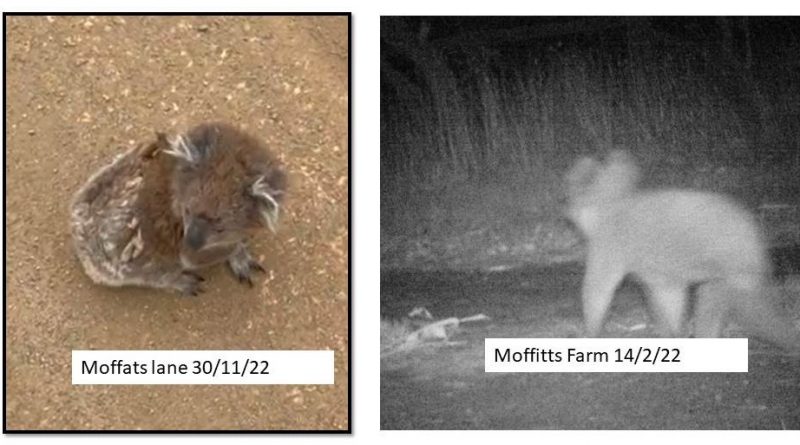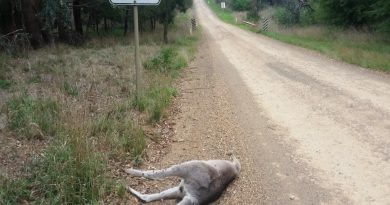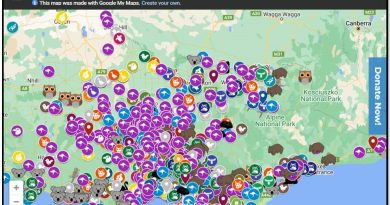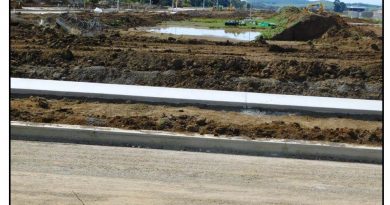Draft community local laws ignore wildlife and people using minor rural roads
By Patrick Francis
The Macedon Ranges Shire Council’s Community Local Laws were open for public review in April 2023. Such a review is held every 10 years. Despite clearly stated Objectives for ensuring fair behaviour and responsibility for all shire residents there are some important omissions in the draft document which disadvantages some residents in favour of others. In this submission to Council I nominate three areas where the objectives are not being applied equally or adequately:
* Default 100km per hour speed limit on minor rural roads,
* Recreational use of light aircraft parked at Romsey Airfield, and
* Noxious weed and feral animal control.
Because the default maximum speed limit on council’s category 3, 4 and 5 (Road Management Plan 2021) rural roads is 100km per hour there are some sections of roads where the Objectives of the Community Local Law 2023 are being ignored.
In particular I refer to Objective 1 which states:
“managing, regulating and controlling activities and uses on land which:
(a) may be dangerous, cause a nuisance or be detrimental to the amenity of the area or the environment;
(b) are directed at maintaining the health and well-being of the community and a safe environment for residents and visitors;
(c) promote an environment in which residents and visitors to the municipal district can enjoy a lifestyle that is expected of the area;”
and Objective 2 which states:
“regulating and controlling behaviour which causes detriment to the amenity and environment of the municipality or which could compromise public safety, Council land or Council assets; “
Similarly the 100km per hour speed limit on category 4, 5 and 6 rural roads also violates the Proposed alternative Objectives (a), (b) and (d) which state:
“The objectives of this Local Law are to provide for the health, safety and good governance of the municipal community in a manner which is consistent with the Council Plan and to facilitate those objectives by:
(a) regulating activities which may otherwise be detrimental to another person’s enjoyment;
(b) prohibiting activities which create adverse impacts;
(d) promoting a cohesive, sustainable and flourishing environment for the enjoyment of current and future generations.”
Residents who regularly have to deal with confronting wildlife road kills as shown in Figure 1 are currently not being considered under the Objectives. Finding wildlife killed and injured on local roads sign posted with warnings that wildlife cross roads is not conducive to “an environment in which residents and visitors to the municipal district can enjoy a lifestyle that is expected of the area”.
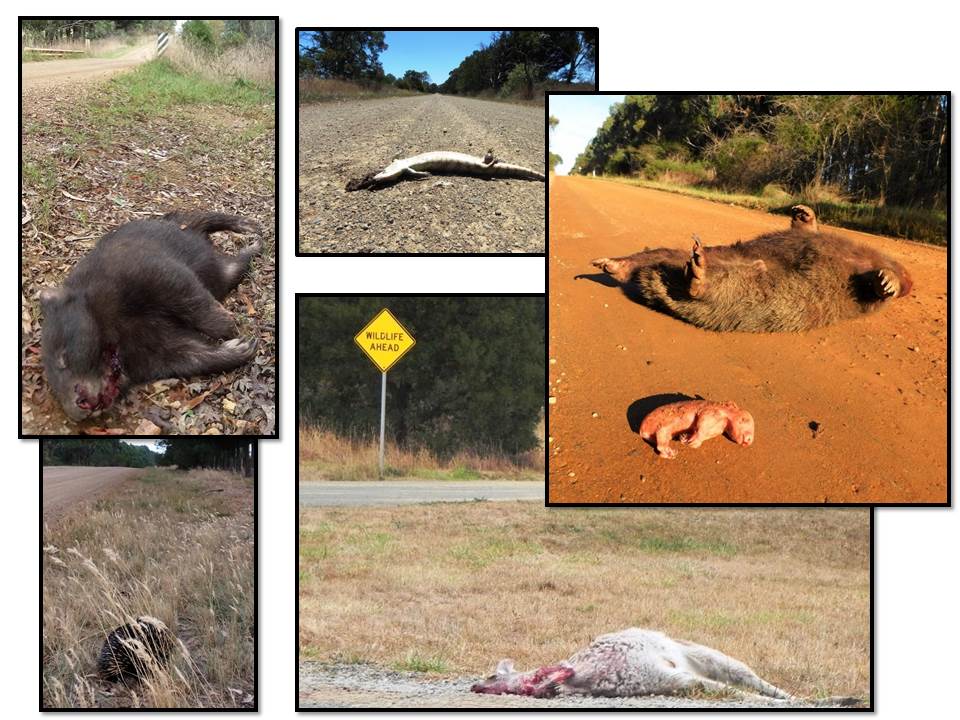
Figure 1: Some of the Objectives on which the Local Laws 2023 are premised upon are being ignored in situations where Council needs to negotiate with the state government to implement behaviour change. In the case of the default 100km per hour speed limit on some sections of local roads, the speed should be reduced to 50km per hour.
For town residents and landowners who use local council managed roads for exercise, and for personal well-being by connecting with nature, some of the Local Laws Objectives seem to be ignored. The stated “public safety” and “person’s enjoyment” are incompatible with the 100km per hour default speed limit. As the Transport NSW data in figure 2 shows, vehicles travelling at 100km have a reaction and braking time stopping distance of 133m on a dry bitumen road (no data is available for stopping distance on a gravel road). So if there is an unexpected incursion of a person, animal or bike onto the road within 133m of a vehicle travelling at 100km per hour the person is likely to be hit. In contrast if the vehicle is travelling at 50km per hour on these roads which is being recommended by many local residents, the stopping distance is just 37m therefore significantly reducing the possibility of a collision.

Figure 2: Some of the Objectives for Local Laws 2023 are either being ignored or discounted when it comes to the enjoyment and safety of residents who use local rural roads for exercise and well being. Photos: Patrick Francis; graph: Transport NSW.
A third Local Law Objective currently being ignored for some residents relates to the use of Romsey Airfield for recreation flying because it is an activity which “may be dangerous, cause a nuisance or be detrimental to the amenity of the area or the environment”.
Light aircraft are regularly taking off, circling and landing sometimes multiple times for practice from this private airfield. On take-off and landing these aircraft can be as close as 100m above farm houses, their noise is excessive, birds of prey are rarely seen in its vicinity south of the Macedon Ranges as aircraft transverse their gliding/hunting range, and there is a constant threat of aircraft accidents.
This airfield should be retained for emergency use only and recreational pilots given notice to relocate to an appropriate airfield where noise nuisance and safety has less impact on residents and wildlife. It is also difficult to understand how an airfield accommodating private plane hangars can be considered to be contributing to “productive agriculture” in the farming zone. It should also be noted that light planes are significant contributors to the Shire’s greenhouse gas emissions as the Avgas used to power them is a fossil fuel.


Figure 3: Light planes using Romsey airfield located in the Shire’s farming zone is an activity which contradicts a range of Community Local Law 2023 Objectives including 1C which states “promote an environment in which residents and visitors to the municipal district can enjoy a lifestyle that is expected of the area;” Photos: Patrick Francis.
Other Community Local Laws issues to consider
17. Collecting wood.
Needs a clarification statement which allows landowners adjacent to council managed roads to remove branches that fall across their boundary fence onto the council verge, without a permit. The alternative is to cut the fallen branches or trunk at the fence line and leave it to council officers to clean up the material on the verge.
19. Grazing and Driving Livestock
Driving stock between properties on category 4, 5, and 6 roads should be allowed without a permit when it is undertaken as a routine practice to ensure best practice grazing management.
44. Noxious Weeds
Needs to provide more details as to level of control required for different weeds classifications in the Shire as part of the Port Phillip and Westernport district (Regionally Prohibited Weeds (P), Regionally Controlled Weeds (C), or Restricted Weeds (R))
Also council should provide details to landowners about the period of time landowners can allow noxious weeds to remain on their properties without taking reasonable action to control them and before Council serves a Notice to Comply to control the weeds and remove feral animal habitat.
Also needs a statement for landowners linking the presence of noxious weeds of with the control of all feral animals – foxes, feral cats and rabbits on their land as the two a closely linked. Clumps of noxious weeds like blackberry and gorse provide habitat for feral animals so landowners responsibility for removing weeds is linked to their responsibility for controlling feral animals by destroying dens and warrens in an around noxious weeds. Wording in Section 60 Pest and Stray Animals is not sufficient for the control of feral animals which cause serious damage to wildlife even local extinctions, and to the environment especially by rabbits on erosion prone soils. As with weeds, feral animal control needs a time line for how long landowners have to take action before council serves a Notice to Comply to take action to reduce the feral animal threat to wildlife and the environment.

Figure 4: The Council recognises that the Shire is facing a biodiversity crisis. The apex wildlife predator across the shire is the fox followed by the feral cat. Community Local Law 60 is insufficient to ensure all land owners and managers take active steps to control feral predators and remove their habitat.
59. Effective Fencing and Confinement of Farm Animals
Part 2 should provide an exemption when a farm animal is found at large if the cause of the escape was not the fault of the owner or occupier of the land. Trespassers or a visitors can leave a gate open, an animal may be frightened through a fence by a wandering dog or unleashed dog. There is a significant difference between neglecting to confine livestock and misadventure due to other circumstances.

